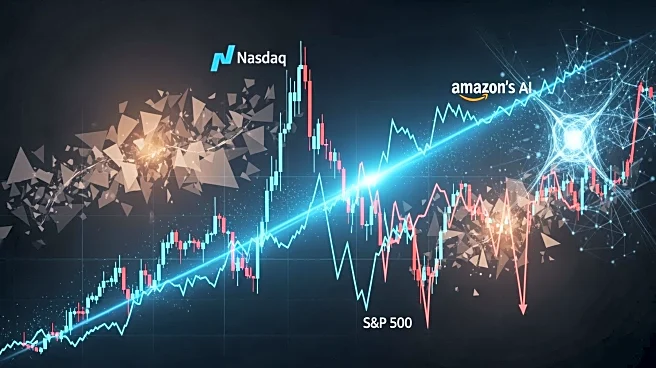What's Happening?
The U.S. stock market saw a notable rise on Monday, primarily driven by gains in technology stocks, particularly those related to artificial intelligence. The S&P 500 experienced a slight increase, while
the Nasdaq, heavily weighted with tech stocks, also saw modest gains. This surge was largely attributed to Amazon's significant $38 billion deal with OpenAI, which boosted investor confidence in AI-related stocks. Additionally, Eli Lilly's stock continued its upward trajectory, gaining approximately 3% on Monday. This follows the company's positive third-quarter earnings report and its announcement of a $3 billion investment in a new manufacturing facility in the Netherlands. This facility aims to enhance Lilly's production of oral medicines and strengthen its global supply chain.
Why It's Important?
The rise in tech stocks underscores the sector's growing influence on the overall market, particularly as companies like Amazon and Nvidia continue to make strategic moves in AI. This trend highlights the increasing importance of technology in driving economic growth and investor sentiment. Meanwhile, Eli Lilly's expansion plans reflect the pharmaceutical industry's ongoing efforts to bolster supply chains and meet global demand for innovative treatments. The company's investment in manufacturing capabilities signals confidence in its product pipeline and future growth prospects. These developments have significant implications for investors, as they indicate potential long-term growth opportunities in both the tech and pharmaceutical sectors.
What's Next?
Looking ahead, the market will be closely watching upcoming earnings reports from major companies such as Palantir, Pfizer, and Uber, which could further influence market trends. Additionally, Eli Lilly's continued expansion efforts and strategic investments will be monitored for their impact on the company's market position and financial performance. Investors will also be keen to see how the tech sector's momentum sustains in the face of evolving economic conditions and regulatory challenges.












